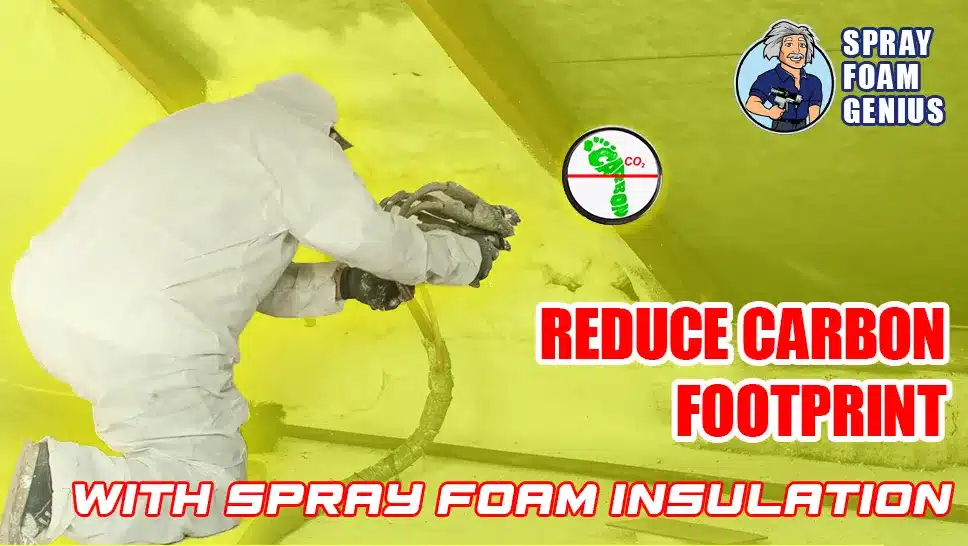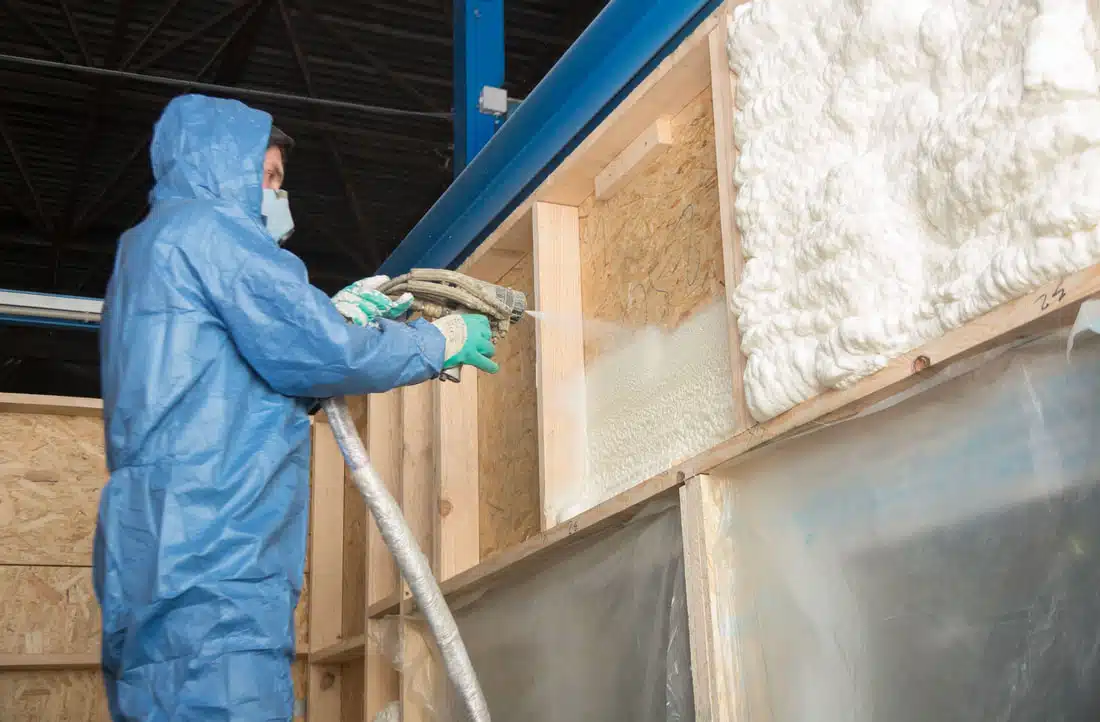
In the modern era of environmental awareness, every choice we make has an impact on our planet. One of the effective ways to reduce our environmental footprint is through the implementation of energy-efficient technologies in our homes and businesses. Spray foam insulation stands out as a particularly effective solution. This comprehensive guide explores how spray foam insulation works, its environmental benefits, and why it’s a smart choice for those looking to minimize their carbon footprint.
What is Spray Foam Insulation?
Spray foam insulation is a type of insulation made from a mixture of chemicals that, when combined, expand and form a foam. This foam, when applied to surfaces, solidifies into a dense, effective barrier against heat and moisture. There are two main types of spray foam insulation:
1. Open-Cell Spray Foam
Characteristics:
- Soft and Flexible: Open-cell foam is softer and less dense than closed-cell foam. It has a sponge-like texture and is more flexible, making it suitable for interior applications.
- Lower R-Value: This type has a lower R-value (a measure of thermal resistance) compared to closed-cell foam. It still provides good insulation but is typically used where high insulation values are not critical.
Applications:
- Interior Walls: Open-cell foam is commonly used in interior walls, ceilings, and floors.
- Soundproofing: Its flexible nature makes it effective at soundproofing, reducing noise transmission between rooms.
2. Closed-Cell Spray Foam
Characteristics:
- Dense and Rigid: Closed-cell foam is denser and more rigid, providing a stronger barrier against heat and moisture. It has a higher R-value compared to open-cell foam.
- Moisture Resistant: It is highly resistant to moisture, which helps in preventing issues related to water infiltration and mold growth.
Applications:
- Exterior Walls and Roofs: Closed-cell foam is ideal for use in exterior walls, roofs, and other areas exposed to the elements.
- Structural Reinforcement: Its rigidity also makes it suitable for structural reinforcement, adding strength to walls and roofs.
How Spray Foam Insulation Reduces Your Carbon Footprint
1. Enhanced Energy Efficiency
One of the most significant ways spray foam insulation contributes to reducing your carbon footprint is through its superior energy efficiency. Here’s how it helps:
Airtight Seal: Spray foam insulation creates an airtight seal in your home or building. This prevents heated or cooled air from escaping, leading to:
- Reduced Energy Consumption: With less air leakage, your heating and cooling systems do not need to work as hard to maintain the desired temperature. This results in lower energy consumption and fewer greenhouse gas emissions.
- Lower Utility Bills: Effective insulation translates into decreased energy use, which lowers your utility bills. This not only saves you money but also reduces the overall energy demand.
2. Lower Greenhouse Gas Emissions
By improving energy efficiency, spray foam insulation contributes to a reduction in greenhouse gas emissions. Here’s how:
Reduced Fossil Fuel Dependence: Effective insulation reduces the reliance on fossil fuels for heating and cooling. This leads to a decrease in carbon dioxide (CO2) emissions, which are a major contributor to climate change.
Sustainable Building Practices: Spray foam insulation’s durability means that buildings require fewer renovations and repairs over time. This reduces the consumption of building materials and resources, supporting sustainable building practices.
3. Long-Term Durability
Spray foam insulation is known for its durability. Unlike traditional insulation materials, which may settle or degrade over time, spray foam maintains its effectiveness for decades. This has several environmental advantages:
Reduced Waste: The longevity of spray foam insulation means that fewer replacements and repairs are needed. This results in less waste and a reduction in the consumption of raw materials.
Extended Life of Building Components: By providing an effective moisture barrier, spray foam insulation helps protect building components from damage. This extends the life of your building and its materials, contributing to overall sustainability.
4. Effective Moisture Control
Moisture control is essential in maintaining a healthy and energy-efficient building. Spray foam insulation excels in this area:
Preventing Mold Growth: Moisture accumulation can lead to mold growth, which affects indoor air quality and damages building materials. Spray foam insulation’s moisture resistance helps prevent these issues.
Improving Indoor Air Quality: By reducing moisture and preventing mold growth, spray foam insulation contributes to a healthier indoor environment. This can lead to lower energy consumption and fewer health-related costs.
Additional Environmental Benefits

1. Reduction in Carbon Footprint Over Time
The environmental benefits of spray foam insulation extend beyond immediate energy savings. Over time, the reduction in energy consumption and greenhouse gas emissions contributes significantly to lowering your overall carbon footprint. The longevity and effectiveness of spray foam insulation mean that these benefits are sustained for many years.
2. Recycling and Sustainability
Many spray foam insulation products are made with recyclable materials and are designed to be environmentally friendly. This aligns with sustainable building practices and supports the broader goal of reducing waste and conserving resources.
3. Support for Green Building Certifications
Spray foam insulation can help buildings achieve various green building certifications, such as LEED (Leadership in Energy and Environmental Design). These certifications recognize and promote environmentally responsible building practices, further supporting the reduction of carbon footprints.
Why Choose Spray Foam Insulation?
1. Expertise and Experience
At Spray Foam Genius Marketing, we are experts in the field of spray foam insulation and its environmental impact. Our focus is on providing marketing and SEO Services specifically tailored for spray foam insulation contractors. Our deep understanding of the industry allows us to connect you with professionals who are not only knowledgeable but also committed to promoting sustainable practices.
2. Informed Decision-Making
Choosing spray foam insulation involves making an informed decision that supports both energy efficiency and environmental sustainability. We aim to provide you with comprehensive information and resources to help you make the best choice for your home or business.
3. Professional Assistance
If you’re considering spray foam insulation, our network of experts is ready to assist you through every step of the process. From initial consultation to installation, you can rely on our partners to deliver high-quality service and ensure that you reap the full benefits of spray foam insulation.
Elevate Your Business Today
Spray foam insulation is a powerful tool in the fight against climate change and reducing carbon footprints. By enhancing energy efficiency, lowering greenhouse gas emissions, and providing long-term durability, spray foam insulation offers numerous environmental benefits. It’s a smart choice for anyone looking to make a positive impact on the environment while enjoying the advantages of superior insulation.
For more information on how spray foam insulation can benefit you and the environment, or to find a qualified professional, contact us at Spray Foam Genius Marketing. We’re here to help you connect with the right experts and make informed decisions about your insulation needs.
Contact Us:
- Phone: 877-840-FOAM for USA and 844-741-FOAM for Canada
- Website: https://sprayfoamgeniusmarketing.com/
- Email: [email protected]
- How to Use Pinterest to Market Your Spray Foam Insulation Services - December 27, 2023
- How to Use LinkedIn to Grow Your Spray Foam Insulation Business - December 23, 2023
- How to Use Instagram to Showcase Your Spray Foam Insulation Projects - December 16, 2023

